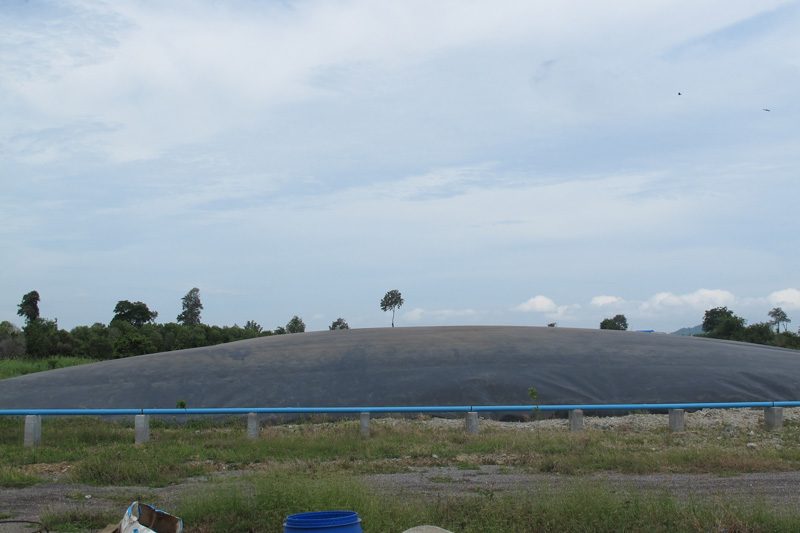Sun Mao’s company started installing biodigesters, which turn animal manure into methane, in 2008—about the time alternative energy technology started to catch on in Cambodia.
But early this year, Mr. Mao said he dropped the dung-to-fuel business and began focusing exclusively on solar power systems.

“There are opportunities to do biogas projects in some provinces,” but the company turns them down, Mr. Mao, the director of EcoSun Energy, said by telephone on Thursday. “We can see that we cannot make much profit from that. Solar is busy enough.”
A new biogas technology and information center launched on Thursday, however, hopes to make the industry commercially viable, breaking down barriers such as high labor costs and a scarcity of farmers willing to invest in the technology.
“We want to help commercial farmers who have lots of manure, but they don’t know how to convert the animal manure to an energy source,” said Ngov-Veng Chheng, a national project coordinator at the U.N. Industrial Development Organization (UNIDO) in Cambodia.
Biodigesters consist of an underground chamber, which can be made from plastic, brick-and-mortar or concrete, and is filled with animal manure. The organic material gives off methane, which is piped into homes or industrial facilities and burned, either for domestic cooking or to produce electricity.
The center, launched on Thursday by UNIDO and the Royal University of Agriculture in Phnom Penh, will promote the management of animal waste to minimize environmental impacts, Om Kimsir, secretary of state at the Agriculture Ministry, said in a statement.
While Cambodia’s National Biodigester Program, which launched in 2006 and has built more than 25,100 biodigesters across 14 provinces, is focused on household biodigesters, “our project is focused on the commercial scale,” Mr. Chheng said.
“Commercial farms now, they use inefficient, outdated diesel generators, which are costly to them,” he said. “Operations costs are high” and livestock generates “lots of waste that is not properly treated”—and gives off quite a stench.
Mr. Chheng said bringing the technology to large-scale farms could benefit farmers and the agricultural industry. “The bigger the farm, the shorter the payback period,” he said, referring to how long a farmer would have to wait for a return on their investment.
He estimated there were three to five animal-based, commercial-scale biogas systems operating today in Cambodia.
While the industry has “been growing,” Mr. Chheng said, “it’s at a slower rate.”
As a means to develop a network, share information and promote the technology to consumers, the center may help transform the biogas industry from one focused on building biodigesters for individual families’ home-cooking needs to a sector that helps power industrial agriculture.
For now, Mr. Mao of EcoSun said the industry needed to be creative to grow.
“In general, biogas now is not increasing,” he said. “It will expand if we change the model. If you can buy biogas from a market.”




